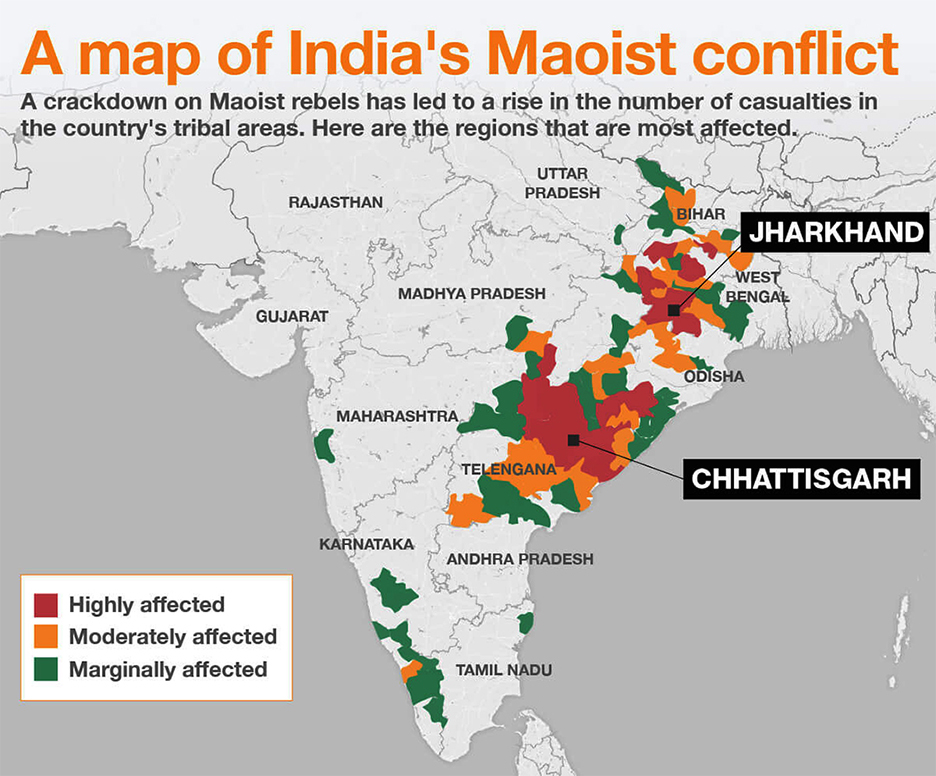Maoist Insurgency on Decline | 13 Jul 2024
Why in News?
In 2024, India has observed 162 Maoist-related fatalities, with Chhattisgarh accounting for 141 of these deaths.
- This marks one of the highest casualty figures for extremists in the predominantly tribal state since the establishment of the Communist Party of India (Maoist) (CPI-M) in 2004.
Key Points
- "Operation Green Hunt," started in 2009 by involving the Central Reserve Police Force’s CoBRA force and Chhattisgarh police “search and comb” operations led to decline in Maoist activities in India.
- While Maoist casualties have increased, the deaths of security force personnel have come down.
- In 2024, 14 security force personnel died in the insurgency, compared to the highest of 198 in 2007.
- The number of civilian deaths has also been at its lowest since 2014, with 23 people killed in Maoist attacks.
- Bijapur and neighboring Sukma have 20 Border Security Force (BSF) camps due to intense operations.
- In Kanker, a joint BSF and District Reserve Guard operation killed 29 Maoists, including a top commander. In Dantewada, declared 'Maoist-free' in 2021, only 15 Maoists were killed in 2024.
The Greyhounds
- It is an elite anti-Maoist force raised in 1989 by IPS officer K.S. Vyas to combat the growing Maoist threat in Andhra Pradesh.
- The members are well-trained in guerilla and jungle warfare.
Operation Green Hunt
- Operation Green Hunt was a military operation by paramilitary forces and the states forces against the Naxalites.
- The operation began in November 2009 along 5 states in the "Red Corridor."
Red Corridor
- The Red Corridor is the region in the central, eastern and southern parts of India that experience severe Naxalism–Maoist insurgency.
- It includes the states of Chhattisgarh, Jharkhand, Odisha, Bihar, West Bengal, Andhra Pradesh, Telangana, Maharashtra, Madhya Pradesh and Kerala

